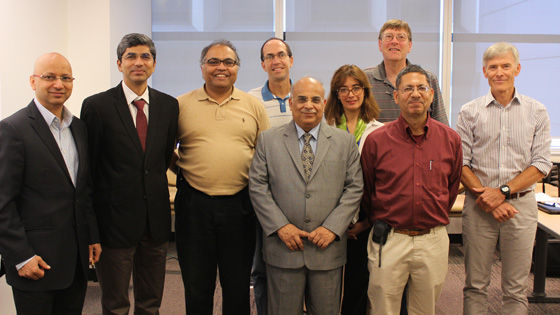
The Canada-India International Malaria Consortium met in MaRS last week to develop a number of drug targets for new chemical classes of drugs that are able to overcome drug resistance for malaria. About 3.2 billion people – almost half of the world's population – are at risk of malaria.(Photo: UHN)
The Canada-India International Malaria Consortium met in MaRS last week to develop preclinical and clinical strategies for new malaria drug development.
Concerns of widespread resistance to treatment are increasing as parasite resistance to antimalarials has been documented in three of the five malaria species known to affect humans. This resistance results in a delayed or incomplete clearance of parasites from the patient's blood when the person is being treated.
As the threat of antimalarial drug resistance grows, there is increasing pressure to develop alternative treatments as well as put in place preventative measures such as bednets.
Malaria is present in more than 100 countries. It is the single largest cause of death for children under five in sub-Saharan Africa, where it kills nearly one child every minute, or more than a 1,000 children every day.
The public and private partners in this collaboration include Toronto General Research Institute, University Health Network as the Canadian lead institute (Principal Investigator: Dr. Lakshmi P. Kotra), Therapure Biopharma, Nucro-Technics, CIDAVA Innovations, International Center for Genetic Engineering and Biotechnology as the Indian lead institute (Principal Investigator: Dr. Asif Mohmmed), Lifecare Innovations-India and Birla Institute of Tech&Science-India.
With funding from Government of Canada, Government of Ontario and Government of India, this consortium has been working on a number of drug targets to develop new chemical classes of drugs that are able to overcome drug resistance to provide improved global solutions for malaria therapy
